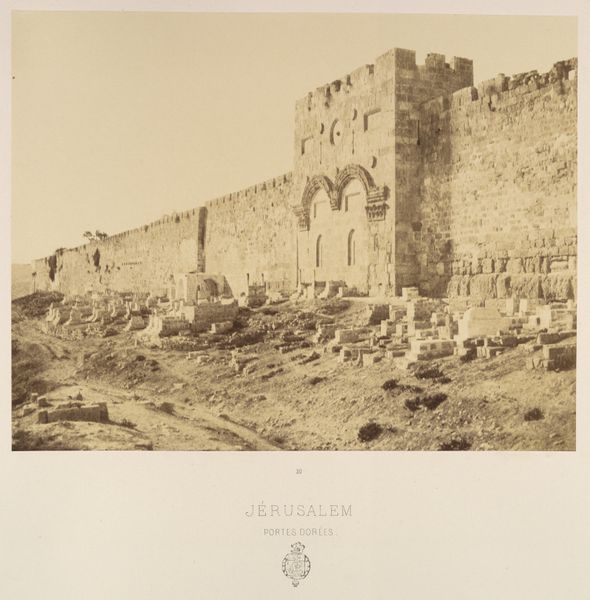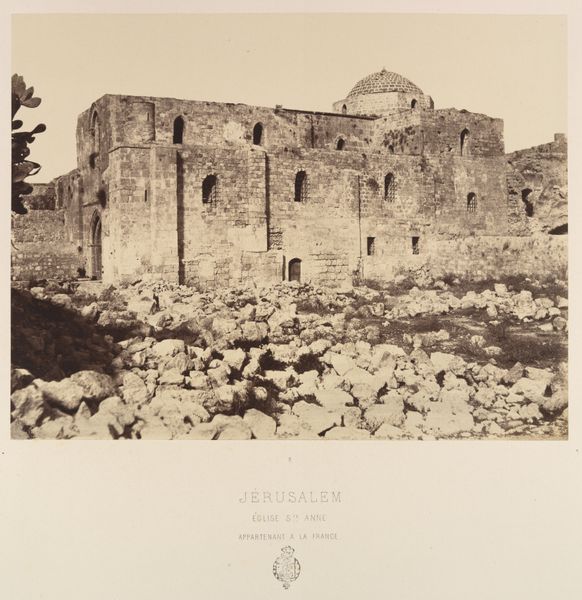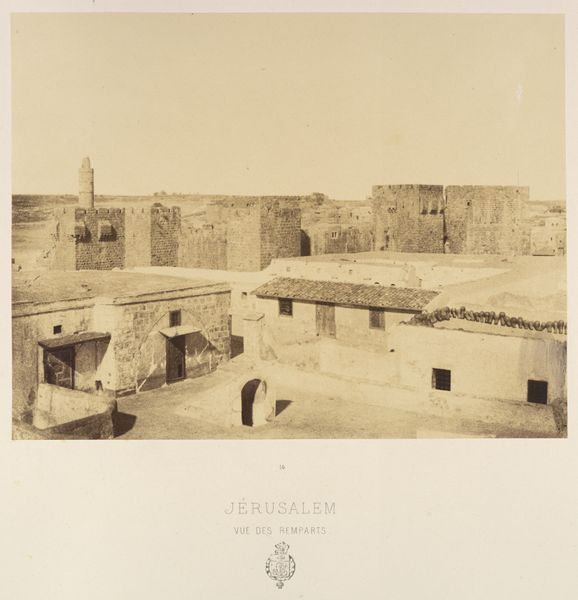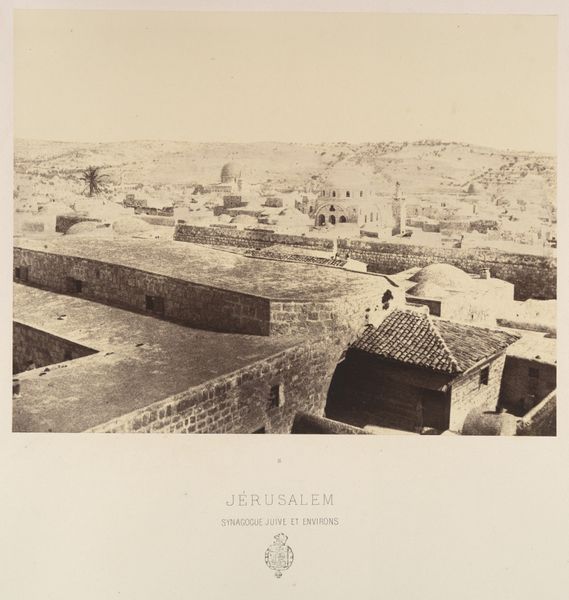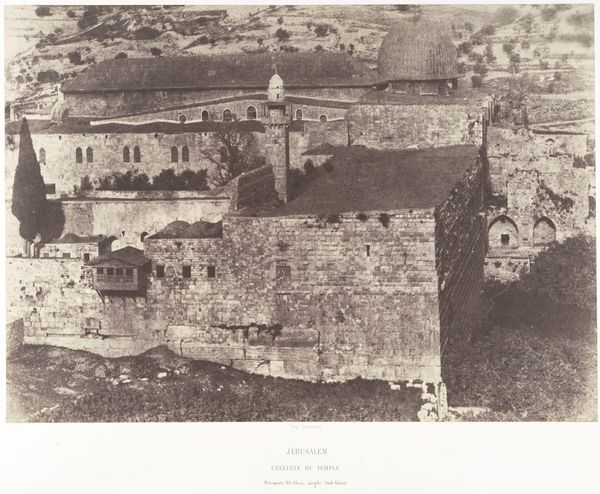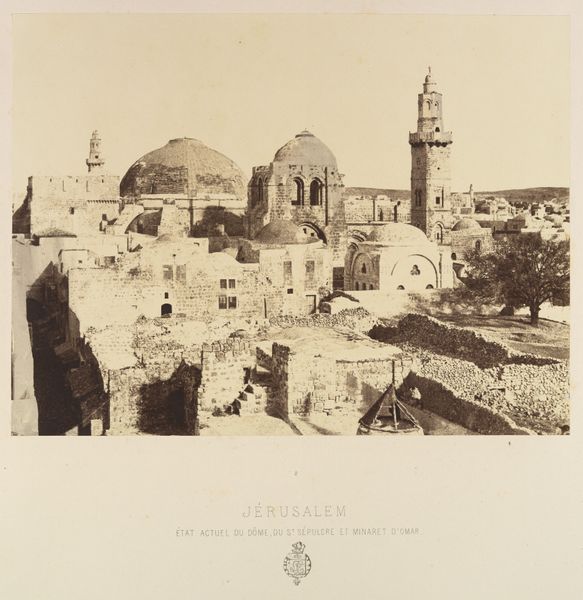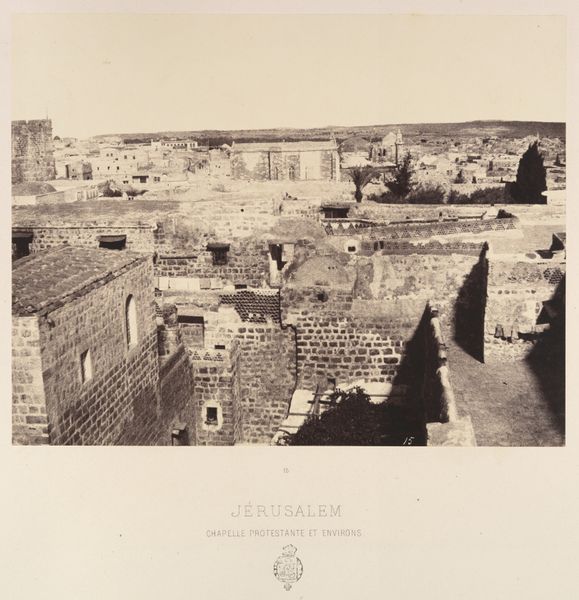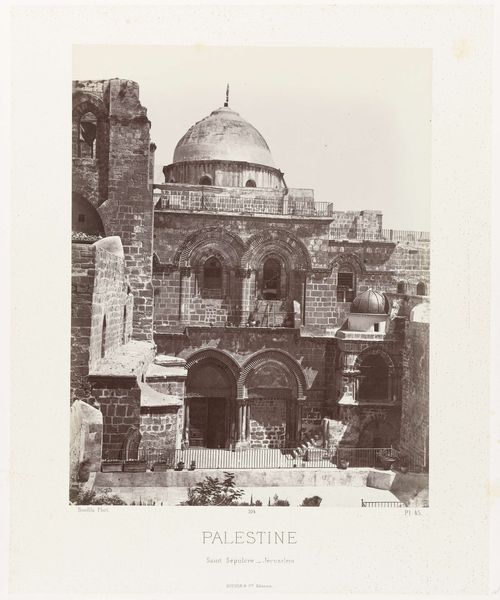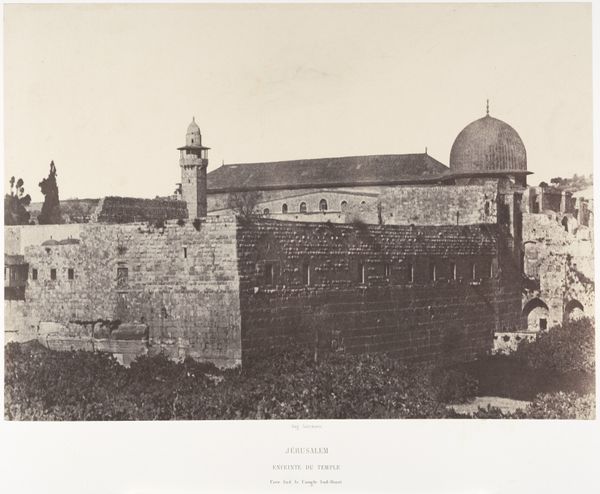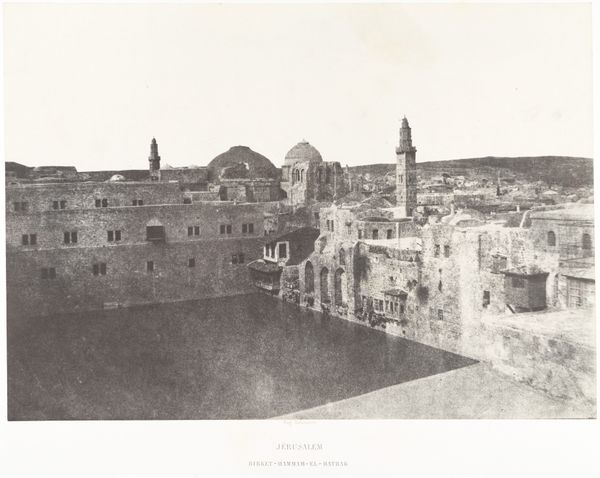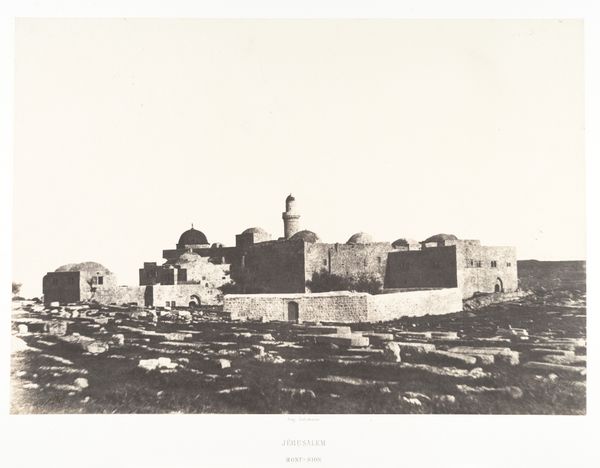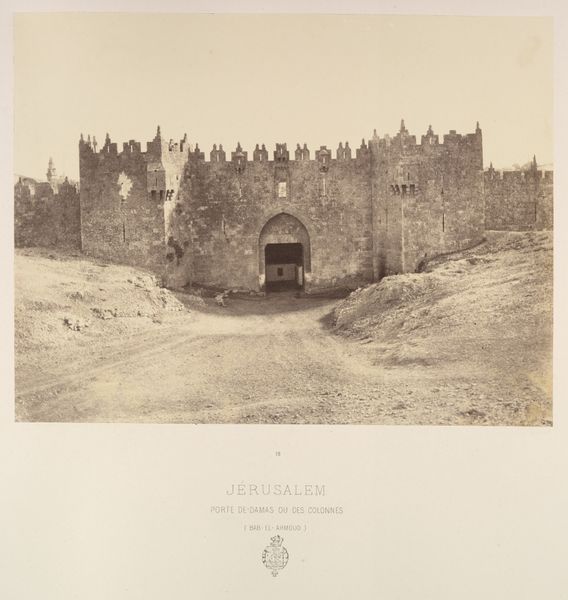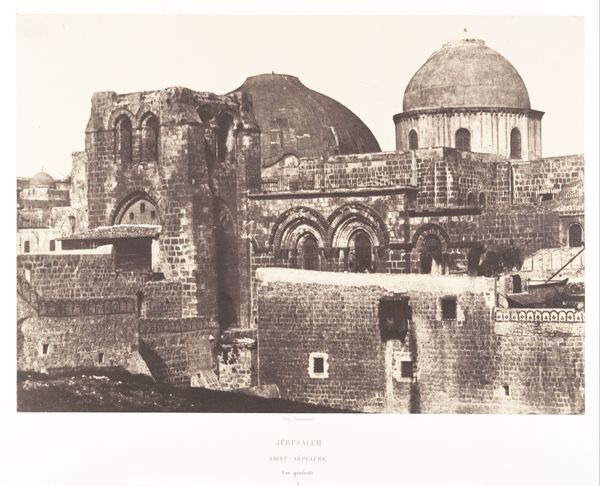
Jérusalem. Tour de David avec ses grandes assises salomoniennes 1860
0:00
0:00
print, daguerreotype, photography, architecture
# print
#
landscape
#
daguerreotype
#
photography
#
orientalism
#
cityscape
#
islamic-art
#
architecture
#
building
Dimensions: Image: 8 1/8 × 10 7/8 in. (20.6 × 27.7 cm) Mount: 17 15/16 × 23 1/4 in. (45.5 × 59 cm)
Copyright: Public Domain
Curator: So, this is Louis de Clercq's "Jérusalem. Tour de David avec ses grandes assises salomoniennes" or "Jerusalem. Tower of David with its great Solomonian foundations," a daguerreotype from 1860. The sepia tones and the hazy light give it such a dreamy feeling, don't you think? Editor: Yes, dreamlike in that distant, almost unreachable way. Look at those imposing stone structures – they practically dwarf the dwellings below. There's a stillness, a gravitas...a kind of timeless silence, and one immediately starts asking questions, doesn’t one? Curator: Absolutely. De Clercq was documenting sites across the Middle East at a time when very few people had any real idea what Jerusalem looked like. What do you make of this Orientalist fascination? Editor: Well, photography, then and now, promises objective truth. So here, you have the artist wielding a new technology. On the one hand, this suggests the claim that this view, of this important city in its history and architecture, is true to the Western audience. But what truth? Curator: It feels incredibly loaded, doesn't it? De Clercq’s perspective, intentionally or not, carries all the weight of colonial gazing. Editor: Exactly! This isn’t just a landscape; it’s a statement about power, a claiming of visual territory. I wonder, too, how those living within those walls felt about being turned into objects of study, specimens under the photographic lens. It freezes that reality. Curator: That contrast between the monumentality of the Tower of David and the intimacy of the living spaces… I see a subtle comment on the persistence of tradition versus the changing cityscape. I like how that point resonates through those stark geometric forms too. Editor: You're right, there is a tension between past and present, power and vulnerability embedded there. It is a beautiful artifact but tinged with such an uneasy feeling of domination through depiction. That, to me, makes it even more fascinating. Curator: It makes me want to know more. Photography offers the potential for democratization, while simultaneously reinforcing these hierarchical power structures, a tight paradox. Editor: Indeed, seeing a photograph from so long ago can be quite poignant. Perhaps a way of reminding us of the ongoing project that involves interrogating and engaging our views when we encounter art.
Comments
No comments
Be the first to comment and join the conversation on the ultimate creative platform.
